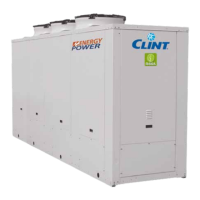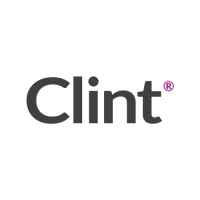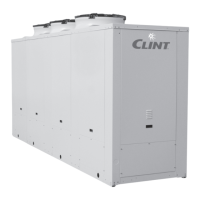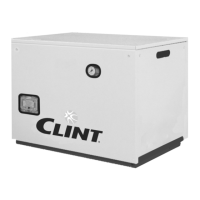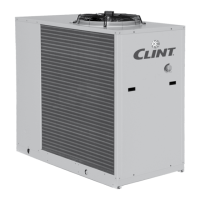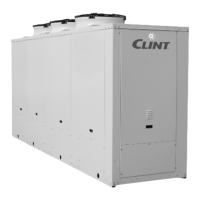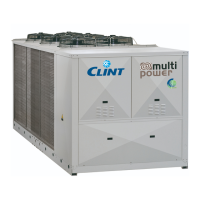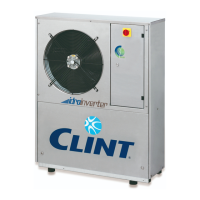
Do you have a question about the Clint idroinverter CHA/IK Series and is the answer not in the manual?
Provides guidance and highlights risks associated with installation, use, and maintenance.
Lists documents that form an integral part of this manual.
Highlights unit design for reliability and safety, complying with EC standards.
Identifies the unit via frame and electrical box labels.
Describes the unit's purpose: cooling water for air-conditioning systems.
Lists substances or conditions to avoid near the unit.
Details the unit's construction: peraluman, free-standing with removable panels.
Provides definitions for dangerous areas, exposed persons, and operators.
Outlines essential safety rules for unit operation and maintenance.
Shows the placement of warning labels on the unit.
Details various warning signs and their meanings.
Specifies the need for an emergency circuit breaker.
Lists potential dangers users might be subjected to.
Lists dangers like electrocution, cuts, substance leaks, etc.
Provides first aid and precautions for refrigerant leaks.
Outlines safety for working with unit panels detached.
Instructions for checking unit condition upon receipt.
Specifies temperature range for unit storage.
Guidance on safely lifting and moving the unit.
Instructions for unpacking the unit at the installation site.
Considers unit weight, supporting surface, space, noise, and access.
Guidelines for installing chilled water circuit.
Important considerations for water inlet to the evaporator.
Instructions for qualified personnel on electrical setup.
Connecting remote ON-OFF commands and signals.
Ensures correct electrical connections, voltage, and system checks.
Procedures for selecting operating cycles and starting the unit.
Verifying water pump power consumption during operation.
Automatic defrosting process for heat pump units.
Proper procedure for stopping the unit operation.
Basic operation instructions for the unit using the ON/OFF button.
Procedure for shutting down the unit for extended periods.
Identifies issues preventing unit startup.
Diagnoses reasons for compressor failure to start.
Addresses issues causing intermittent compressor operation.
Troubleshoots compressor shutdown due to high pressure.
Regular checks for electrical, oil, water, and filters.
Checks for fan condition and mounting.
Repair procedures for the refrigerant circuit by specialized staff.
Procedure for refilling refrigerant, including limits.
